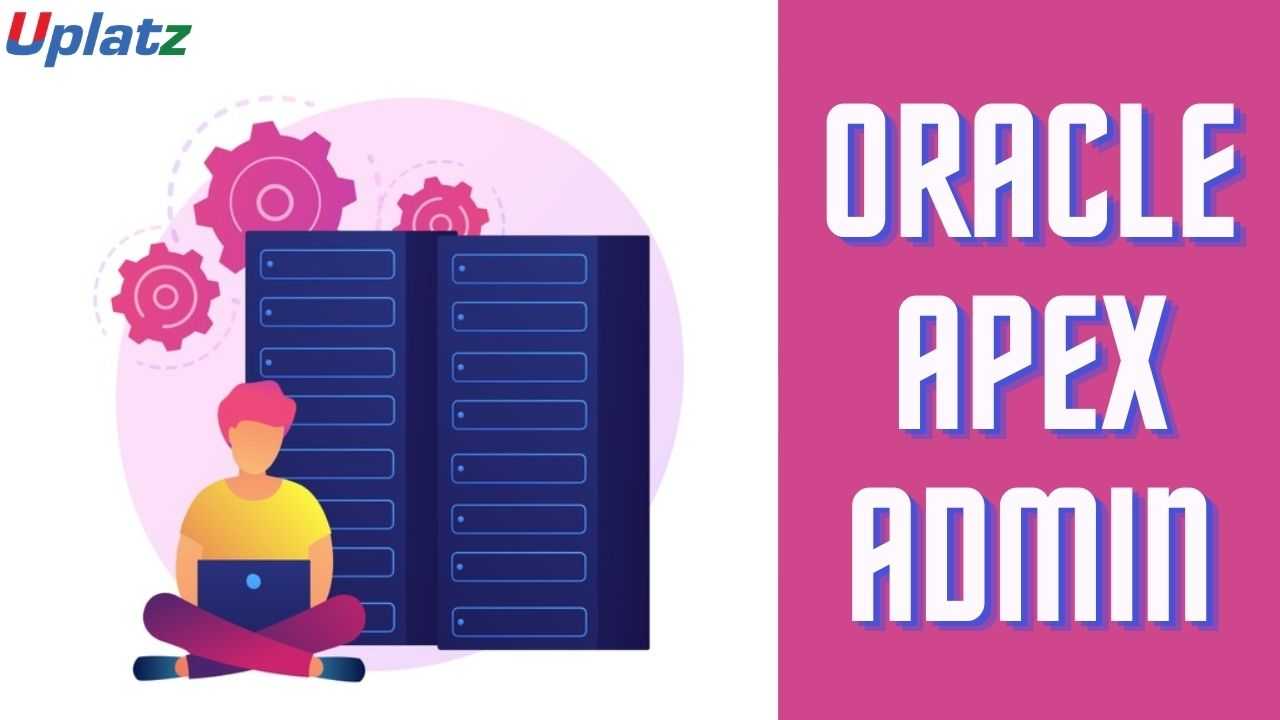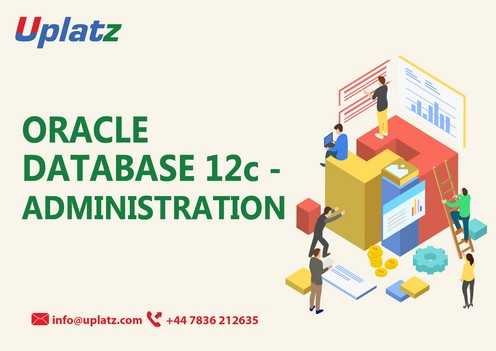Oracle ICS (Integration Cloud Service)
In the course we will learn about integration which will connecting with both on premises and cloud application.Preview Oracle ICS (Integration Cloud Service) course
View Course Curriculum Price Match Guarantee Full Lifetime Access Access on any Device Technical Support Secure Checkout Course Completion Certificate 62% Started a new career
BUY THIS COURSE (
62% Started a new career
BUY THIS COURSE (GBP 12 GBP 29 )-
 68% Got a pay increase and promotion
68% Got a pay increase and promotion
Students also bought -
-

- Oracle APEX Administration
- 2 Hours
- GBP 12
- 42 Learners
-

- Oracle DBA
- 10 Hours
- GBP 12
- 478 Learners
-

- Career Path - Oracle Consultant
- 200 Hours
- GBP 32
- 6123 Learners

Oracle Integration Cloud Service (ICS) is a cloud-based integration application designed to perform integrations between cloud-based applications – but also has capabilities that extend beyond that, to performing integrations with your on premises applications.
Based on the great Oracle Service Bus application, ICS is designed to be more non-developer friendly and takes a different approach to creating integrations. All configurations is browser based and XSL is used for data mapping/transformation.
With Uplatz Oracle ICS Course will give cover the Oracle Integration Cloud Services and its features. Course starts with understanding what OIC help us achieving and then we go on to understand web services which is a pre-requisite for learning OIC. In the course we will build few integration which will connecting with both on premises and cloud application. Also we would see error handling and sending notification from OIC.
Course/Topic - Oracle ICS - all lectures
-
This video comprehends the terms Oracle Integration Cloud Service (ICS) which is Oracle’s integration Platform as a Service (PaaS). It provides a web-based interface to integrate Software as a Service (SaaS) and on-premises applications.
-
This topic will cover Oracle Integration which speed up your intracloud, cloud-to-cloud, and cloud-to-ground connectivity with pre-built, supported adapters for any SaaS, on-premises applications, database, or business process.
-
In this tutorial, you will learn about the ServiceNow Adapter which enables you to create an integration in Oracle Integration. ServiceNow provides platform as a service (PaaS) enterprise service management software for human resources, law, facilities management, finance, marketing, and field operations.
-
In this video you will learn about the Oracle Visual Builder which automatically imports and registers Oracle Fusion Applications Services (FA Services) such as Oracle Sales Cloud, Oracle Enterprise Resource Planning Cloud (Oracle ERP Cloud), and Oracle Human Capital Management Cloud (Oracle HCM Cloud) and the Business Object REST definition within the Oracle Visual Builder Service CatLog.
-
In this tutorial you will know about the orchestration process which is a sequence of steps that automate fulfilling your sales order's fulfilment lines across fulfilment systems.
-
In this video you will learn about the Oracle Application Integration Architecture (AIA) solutions which is delivered as Mediator and BPEL services to create specific integration scenarios between named participating applications. The services interact with each other in various ways, giving rise to diverse interactive styles and patterns for exchanging messages between services.
-
In this tutorial you will learn about the Integration Cloud Service locks which guarantee the integrity of data being accessed concurrently by multiple users. Integration Cloud Service locks help to prevent damage caused by interference from simultaneous conflicting DML or DDL operations.
-
In this tutorial we will learn about the Oracle Integration Cloud Service dashboard, you can also see how your running integrations are processing messages, such as how many messages have been received and processed, how many successful messages and errors have occurred, and the overall success rate. Only activated integrations are listed on this page.
-
In this video tutorial you will learn about the Orchestration View displays and the steps by which BAM transacts the business process contained within the selected orchestration. The view is located on the right pane of the Tracking Profile Editor (TPE) user interface.
-
In this session you will learn about the how to handle and configure diagnostic and message logs. Oracle Fusion Middleware components, including web services, generate log files containing messages that record all types of events, including start up and shutdown information, errors, warning messages, access information on HTTP requests, and so on. Each log message includes specific information such as time, component ID, and user to assist you in pinpointing and diagnosing problems that arise.
-
This tutorial will discuss about various options available to integration developers for error handling using Oracle Integration Cloud (OIC).
-
In this video you will learn the Oracle Database Adapter enables you to integrate the Oracle database residing behind the firewall of your on-premises environment with Oracle Integration through use of the on-premises connectivity agent. Use the Oracle Database Adapter to poll for new and updated records for processing in Oracle Integration.
-
In this video of tutorials, you will create an integration flow that synchronizes customer information between Oracle Service Cloud (RightNow) and Oracle Sales Cloud in real time - that is, whenever an Organization is created in Oracle Service Cloud, an Account Service is created in Oracle Sales Cloud in real time.
-
In this session you will learn the final step to determine if your integration is working properly is to pass data through your integration from Oracle RightNow to Oracle Sales Cloud. The verification process requires you to create a PHP script that runs in the Oracle RightNow console and initiates contact with Oracle Integration Cloud Service and facilitates the transfer of business objects to the Oracle Sales Cloud connection.
-
In this session you will learn about the Adapter Configuration Wizard consists of configuration pages that enable you to select the artifacts required to communicate with the Oracle Eloqua Cloud application. You can configure the adapter in the outbound (target) direction.
-
This tutorial explains what file, ftp/sftp adapter are, and why do we need them. It describes how to create and use them.
-
In the video you will get to know the Oracle Fusion service-oriented platform and applications suite joins next-generation enterprise technologies, applications, and services, including Oracle Fusion Applications and Oracle Fusion Middleware, to change the dynamics in the applications marketplace and revolutionize business.
-
This tutorial covers configuring Oracle Hyperion Financial Data Quality Management ERP Integration Adapter for Oracle Applications, Fusion Edition (ERP Integrator) to import data from Oracle Fusion Financials into Oracle Hyperion Financial Management, Fusion Edition. You then use ERP Integrator to drill through from a Financial Management data grid and view source data in Oracle Fusion Financials.
-
This tutorial will give cover the Oracle Integration Cloud Services and its features. It starts with understanding what OIC help us achieving and then we go on to understand web services which is a pre-requisite for learning OIC. In the session we will build few integrations which will connecting with both on premises and cloud application. Also, we would see error handling and sending notification from OIC.
-
This topic covers the integration document which is designed to be used as a template and is not supported by Oracle as a licensed product. It is a starting point that shows how Oracle Field Service and Oracle B2C Service can be connected using Oracle Integration Cloud Service.
• Learn Oracle Integration Cloud (OIC) or Integrated Cloud Services (ICS)
• Learn how to creating Integration , Error Handling, Notification etc. in OIC
• Understanding Connection, Adapters, Monitoring, Agents in OIC
• Get detail understanding of Web Services and Schema Definition
• Get Oracle Integration Cloud Instance From Oracle
• Deployment of Integration from one Instance to Another
ORACLE INTEGRATION CLOUD SERVICES – Course Syllabus
MODULE 1: OIC OVERVIEW
MODULE 2: VARIOUS OIC NAVIGATIONS & DASHBOARD
MODULE 3: INTEGRATION PATTERS, ADAPTERS & WEB SERVICES
MODULE 4: CONNECTION, INTEGRATIONS AND PACKAGES
MODULE 5: CONNECTIVITY AGENT
MODULE 6: ADMINISTRATING & MONITORING INTEGRATIONS
MODULE 7: CODE PROMOTION & VERSIONING
MODULE 8: VISUAL BUILDER CLOUD SERVICE & EXAMPLES
MODULE 9: PROCESS CLOUD OVERVIEW
The Oracle ICS (Integration Cloud Service) Certification ensures you know planning, production and measurement techniques needed to stand out from the competition.
The Oracle Integration Cloud Service (ICS from now on) provides the cloud based integration platform that can run and manage these integration flows. ICS exposes a browser based user interface through which the integration is first designed, then activated and managed.
Oracle Integration Cloud Service is a complete, secure, but lightweight integration solution that enables you to connect your applications in the cloud. It simplifies connectivity between your applications, and can connect both your applications that live in the cloud and your applications that still live on premises.
Oracle Integration Cloud is a PaaS offering from Integration. OIC includes 3 services i.e. ICS (Integration Cloud Service), VBCS (Visual Builder Cloud Service), and PCS (Process Cloud Service). OIC (ICS, VBCS, PCS) runs on top of OCI.
Oracle Cloud Platform for Oracle SaaS is a collection of Oracle Cloud Platform (PaaS) services that you can use to: Connect your SaaS applications to on-premises applications, third-party applications, data, and processes.
One of the most popular Oracle cloud certifications is OCA–Java Cloud Service. As with most Oracle certs, a single exam is required to earn this credential.
Uplatz online training guarantees the participants to successfully go through the Oracle ICS (Integration Cloud Service) Certification provided by Uplatz. Uplatz provides appropriate teaching and expertise training to equip the participants for implementing the learnt concepts in an organization.
Course Completion Certificate will be awarded by Uplatz upon successful completion of the Oracle ICS (Integration Cloud Service) online course.
The Oracle ICS (Integration Cloud Service) draws an average salary of $120,000 per year depending on their knowledge and hands-on experience.
Oracle Integration Cloud Service is a complete, secure, but lightweight integration solution that enables you to connect your applications in the cloud. It simplifies connectivity between your applications, and can connect both your applications that live in the cloud and your applications that still live on premises.
Oracle Integration Cloud (OIC) brings together all the capabilities of Application Integration, Process Automation, Visual Application Building and Integration Analytics into a single unified cloud service.
Note that salaries are generally higher at large companies rather than small ones. Your salary will also differ based on the market you work in.
Oracle SOA Consultant.
Oracle Integration Cloud Service (ICS).
Oracle Fusion Financials Techno Functional.
Oracle MDM.
Q1. What is Oracle Integration Cloud?
Ans: Oracle Integration Cloud is a Middleware platform offered by Oracle. This enables the communication between multiple applications. All types of applications SaaS, on-premises can be integrated using OIC. OIC offers three applications:
1. Integration Cloud Service (ICS)
2. Process Cloud Service (PCS)
3. Visual Builder Cloud Service (VBCS)
Q2. Oracle Integration Cloud comes under which category of Cloud?
Ans: Oracle Integration Cloud is Platform as a Service (PaaS
Q3. What is Integration in Oracle Integration Cloud?
Ans: Integrations are the main ingredient of Oracle Integration. An integration includes at the least a trigger (source) connection (for requests sent to Oracle Integration) and invokes (target) connection (for requests sent from Oracle Integration to the target) and the field mapping between those two connections.
Q4. What is an adapter in Oracle Integration Cloud?
Ans: OIC adapter is an abstract way to connect to any application with the help of the box adapter. There are 50+ adapters available in OIC. Those are categorized as
- Oracle Adapter (Oracle Sales Cloud, Oracle EBS, Oracle ERP adapter, etc.)
- Non-Oracle Adapter (Salesforce, Ariba, Concur, etc.)
- Technology adapter(REST, SOAP, FTP, etc.)
Q5. How many design patterns are available in OIC and what are those?
Ans: There is a total of six patterns in Oracle Integration Cloud are:
- App Driven Orchestration
- Scheduled Orchestration
- File Transfer
- Basic Routing
- Publish To OIC
- Subscribe To OIC
Q6. What is App Driven Orchestration Pattern?
Ans: App Driven Orchestration pattern is a multi-step pattern, allows invoking multiple applications in a single flow, doing a for-each loop, if-else logic, applying complex logic, etc.
Q7. What is a Scheduled Orchestration Pattern?
Ans: Scheduled Orchestration pattern allows you to develop an integration that can run on a pre-defined frequency and can be executed on an Ad hoc basis.
Q8. What is a File Transfer Pattern?
Ans: The File Transfer pattern allows moving files across the network seamlessly and securely. This is again a scheduled type of pattern.
Q9. What is a Basic Routing Pattern?
Ans: A basic Routing pattern can connect only two applications with no logic.
Q10. What is Publish To OIC and Subscribe To OIC pattern?
Ans: Publish To OIC pattern allows publishing messages to OIC internal messaging queues. For example, an event can be subscribed from Oracle Sales Cloud and published the same into Oracle Integration Cloud messaging queue. Subscribe To OIC pattern subscribe messages from Oracle Integration Cloud messaging queue and send the same to different applications. These queues are managed by OIC itself and you don’t have access of them.









